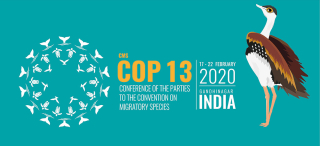

Article d'Alice Bigot, Emily Lewis, Clara Sicard, Alexandra Strutsiuk, Théophile Vernet
An internationalization of the environmental question has proved itself vital to address the growing concerns regarding the state of the climate. At first only addressed as a scientific issue, alarming reports and studies like Rachel Carson’s Our Silent Spring in 1963 or the report of the club of Rome Limits to Growth in 1971 triggered a questioning and a wave of awareness to the danger that overexploitation of resources presented on the long term both for ecosystems and societies. This caused the environmental preoccupations to be brought in the light of politics, sciences getting involved in the political process as national governments decided that it was in their interest to use the newly reported information to act upon the upcoming threats to the well-being of the state. George H. and W. Bush’s and Bill Clinton’s protective policies towards American resources, as well as the growing attention to environmental concerns in French politics have motivated a global spread of mobilization for the state of the environment. This new vision of the world’s well-being as a common responsibility led to an explosion of international institutions focused around an expert scientific approach to understand and solve the issues. Since 1970, Earth summits allow nations to compare and discuss environmental policies. Moreover, to guarantee a precise scientific study that brings real awareness to the state of the climate and a development of concise solutions, scientific committees are created: the International Meteorological Organization (1973) and the Intergovernmental Group of Experts on the Climate (1988), where experts track the state of the climate to actively guide the international instances in charge of environmental policy collaboration like the United Nations Program for the Environment since 1988.
This growing need for an institutional, formal and multilateral approach to the environmental issue led to the creation of the COP (Conference of the Parties) by the UNCED in 1992. During this annual summit, IGEC reports are used to encourage discussions, negotiations and ratified accords between nations and NGOs regarding the state of the climate in sub-commissions of the UN organ. The COPs are organized each year to encourage a collective change, striving to be as inclusive as possible, taking into account as many factors as possible, like the country’s demography, economic state, urbanization, agrarian policy, technology advancement, renewable energy development, adaptation to climate change and position regarding the question of environmental protection.
During the annual COPs, the parties attempt to take key measures to tackle climate change and environmental deterioration due to human activities. For instance, during the first COP ever held, in Berlin in 1995, the first discussions to reduce CO2 emissions led the way to future measures, motivated by an iron will to slow down the effects of climate change on the world. During the 1997 Tokyo COP, ratified by 184 countries, there was a first agreement with clear numbers to reduce greenhouse gas emissions, setting the tone for a formal and controlled international policy against pollution and human impact on their environment. Another key COP worth mentioning would be the COP 13 in Bali in 2007, during which developing countries clearly shifted positions in their environmental policy, ready to make efforts to reduce industrial pollution and adapt their national policy since they are important victims to climate change. The Paris COP21 in 2015 is also evidence of the determination of the participating nations, even ready to limit global warming by 2°C compared to the pre industrial era, an overly ambitious project that still shows how important the question is to the international community.
One of the successes of the COP is the context of global cooperation it creates: the COP 21 was signed by 195 countries while COP 22 was joined by 53 African nations. Such a cooperation incites technological progress in developing countries, gaining knowledge and financial support from the inclusive process. In the same way, the COP location is just as diverse as the process, allowing interaction with different environments. This allows further mobilization and cooperation between nations, like showed by China and France, working together in 2018 to send a satellite to observe climate change. The agreements motivate countries to work on energy efficiency, thus reducing energy waste and pollution on the long term, like in Brazil, where now 80% of cars function on a mix between gas and ethanol. On the grand scale of things, the internalization of the environmental issues and the iron will of the COP also paved the road for civic movements, demanding “climate justice” and feeling included in the fight for the climate.
Nevertheless, the COP still has a limited power when it comes to stopping climate change. A global policy is hard to harmonize with very specific environments and policies already present in the countries. For instance, nations can refuse to vote in favor of any restrictive measures, believing that they go against their need for economic development and overall national demographic structure. There being no way to coerce the nations into applying the proposed measures and no clear way for punishing environmental damage, efforts to tackle the issues are unequal and thus the fight against climate change is slower. For example, USA’s refusal to ratify the Paris accords as one of the biggest greenhouse gas emissions directly prevents the measures from being truly efficient. This global inefficiency of applied COP measures is alarming: not even 10% of the signing countries go through with the promised policies and all the indicators are still in the red. Moreover, today’s tendency to decide unilaterally, thinking of national interests first slow down negotiations, with the growing divisions within the EU as well as the tensions created by American and Brazilian national policies when opposed to the demands of the COP.